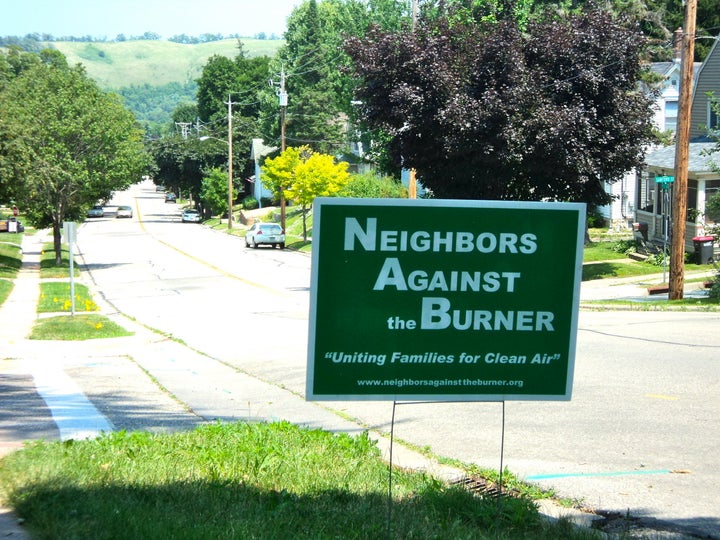
Bets Thorkelson's opposition to 3M Co.'s hazardous waste incinerator began in the mid-1990s, when she learned that four moms of boys on her sons' hockey team had breast cancer.
"About the same time, I had also noticed that many people on my street were starting to die of cancer, including a young boy from a form of lymphoma," said Thorkelson, who lives in what she describes as a blue-collar neighborhood in Cottage Grove, Minn., about two miles from one of the St. Paul-based mega-corporation's factories.
Her distrust of 3M grew when she received a diagnosis of breast cancer herself a decade later. And it mounted further when she heard about the company's plans to truck in additional hazardous waste to use as fuel for an incinerator.
Last week, after three years of public meetings, petitions and pleas from Thorkelson and other residents, the Minnesota Pollution Control Agency approved a permit to burn non-3M waste, as well as materials confiscated by local law enforcement agencies, allowing the company to save as much as $2 million in natural gas. Neighbors said they fear it will add lead, mercury and other toxic pollutants to the air they breathe -- on top of the water and soil contamination already blamed on the company.
No link has been proven between past 3M pollution and cases of cancer. However, the state of Minnesota is suing 3M over claims that the company polluted groundwater and surface water for more than 50 years with perflurochemicals, which scientific studies have suggested may cause cancer.
"The [incinerator] decision is very disappointing, though not surprising," Thorkelson said. "Our community has now become the toxic dumping ground for U.S. industries."
Knowing the permit would be controversial, the state Pollution Control Agency decided to involve residents in discussions concerning the permit, according to the agency's Jeff Smith. "At the heart of the issue was whether the public felt like they were enough part of the process so that they were informed and had a say," Smith said. "Over 15 additional restrictions that might not otherwise have been required were negotiated between citizens, the city and the company. At end of the day, we overachieved in involving the public.
"There will be no additional increases in pollutants beyond what 3M has been permitted to emit," added Smith.
Representatives from 3M also emphasized that the air pollution coming out of their incinerator with the additional hazardous waste would not rise above historic levels , thanks mostly to updated equipment that traps most of the particles.
But are the regulatory limits enough to protect Cottage Grove children from developmental problems, asthma, even cancer? And were 3M's historic pollution levels ever safe?
Alan Muller, who once promoted incinerators for DuPont, said he shares the community's concerns over uncertain answers to both questions. He now helps advise opposition groups, including the Coalition of Concerned Cottage Grove Citizens.
“For every pound of lead that goes into the incinerator, a pound comes out,” said Muller. Toxic metals can't be broken down like other particles, he explained, so they will either spew from the smokestack, end up in the ash that's trucked to a landfill, or get treated with the plant's scrubber water before winding up in the Mississippi River.
A little lead can potentially cause a lot of harm, especially to a child's developing brain. The U.S. Centers for Disease Control and Prevention recently acknowledged the risks by lowering the threshold for lead poisoning.
"It's not that hard to find out hazardous waste incinerators are a bad scene. But this is a political, not a tech, issue," said Muller. "The idea of weakening environmental regulations to revive the economy is not localized. Unfortunately, the same bogus arguments continue to be made all over the country.
"I never had a feeling that MPCA was acting in good faith on this," Muller added. "Whenever you have a powerful corporation, with a lot of clout in the state, it's hard for regulators to stand up to them."
Fred Luden, a resident of Cottage Grove and a former 3M employee, returned from vacation in time to share his concerns at last Tuesday's final hearing. He told the MPCA that it struck him while sitting on a lake with his grandkids just what a pristine environment he enjoyed while growing up in Minnesota, and how contaminated parts of the state have become today.
"You'd like to see at some point in time the ball go back the other way, to an environment that you can pass down to your children, grandchildren, great-grandchildren -- hopefully," said Luden, a member of the board of directors for the Coalition of Concerned Cottage Grove Citizens. "And that they will enjoy the same ability to drink the water, breathe the air, grow what they want in a garden and eat the fish again."
That's little comfort for some families who currently live in what they said is a contaminated environment.
"I have some peace of mind," said Thorkelson, "knowing my grandchildren do not live within a 10-mile radius of the incinerator."
